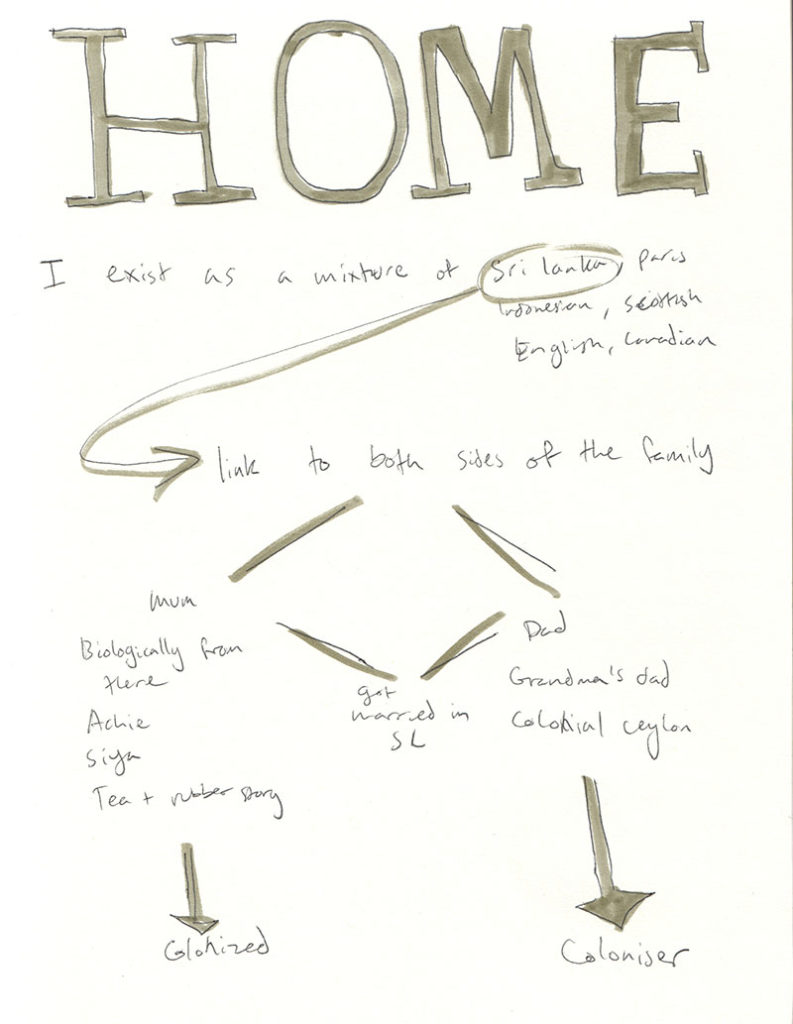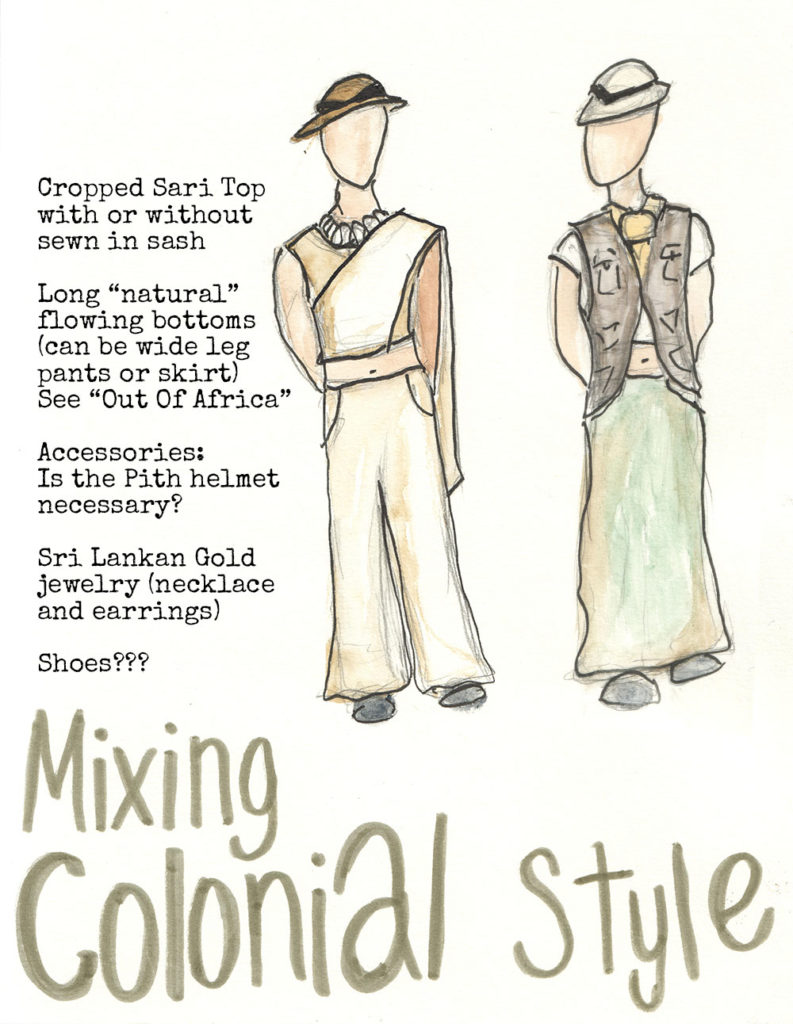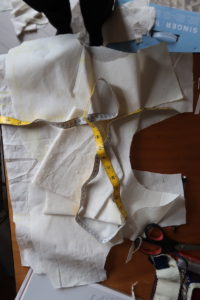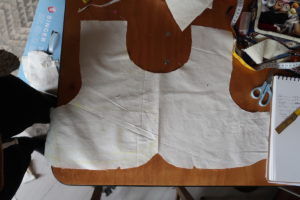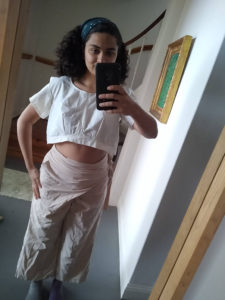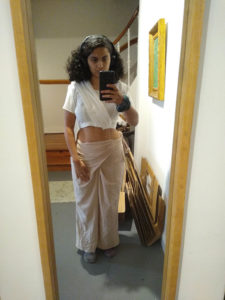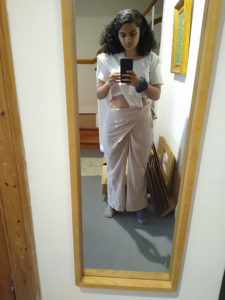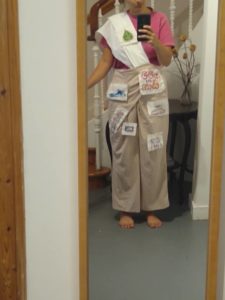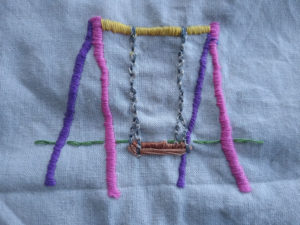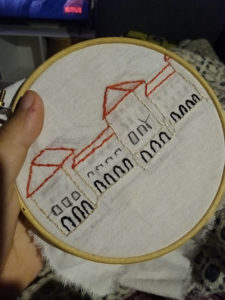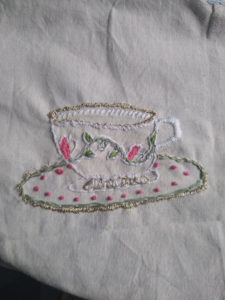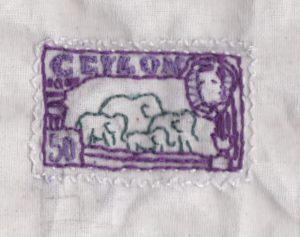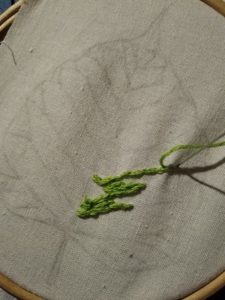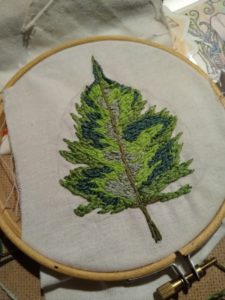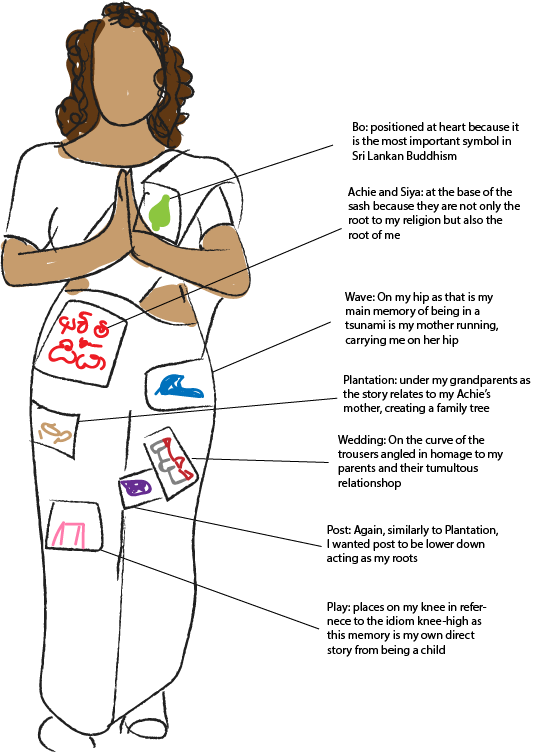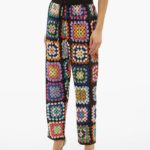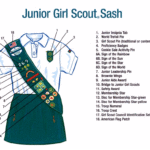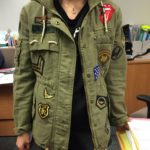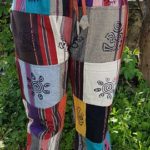Ceud Míle Fàilte
( a hundred thousand welcomes - scottish gaelic)
Ceylon meets Sri Lanka. Uncovering old history using new technologies. What does it mean to be half oppressor and half oppressed when the one thing that both sides can agree on is serendipity.
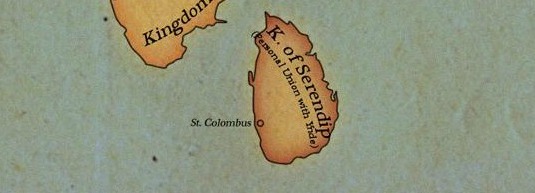
.
Research & Design
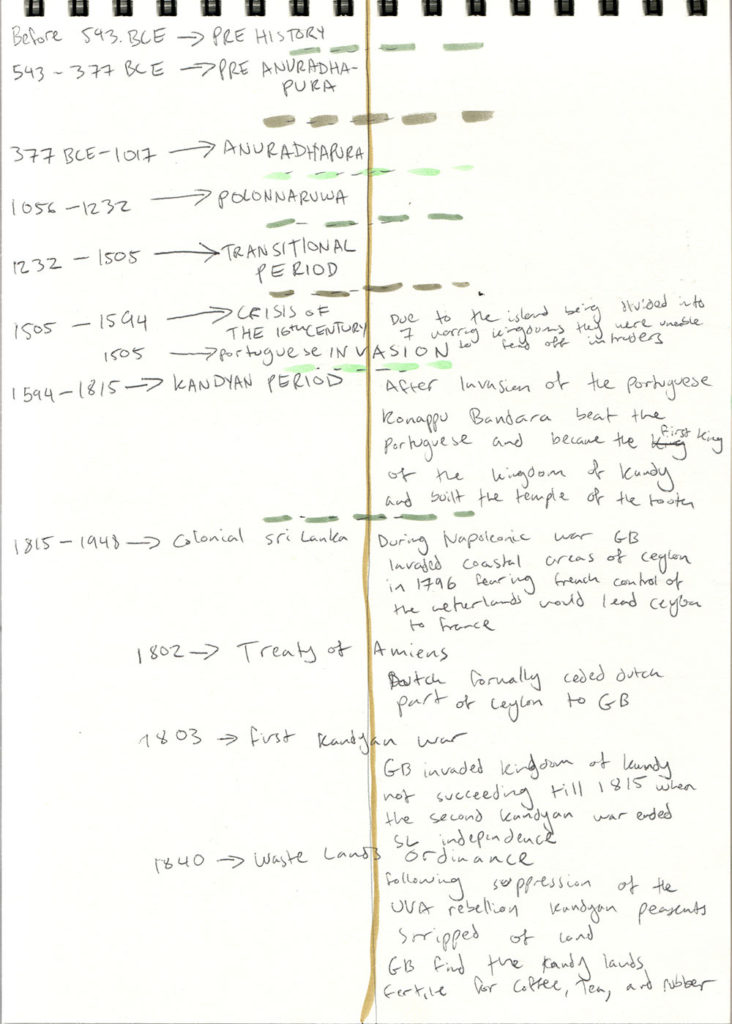
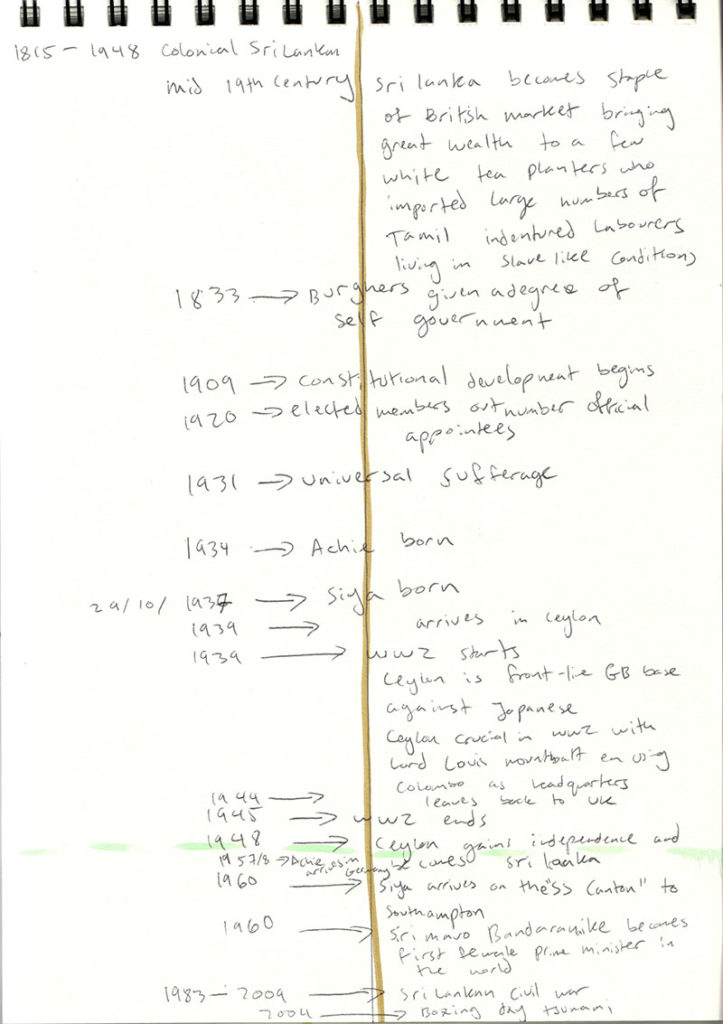
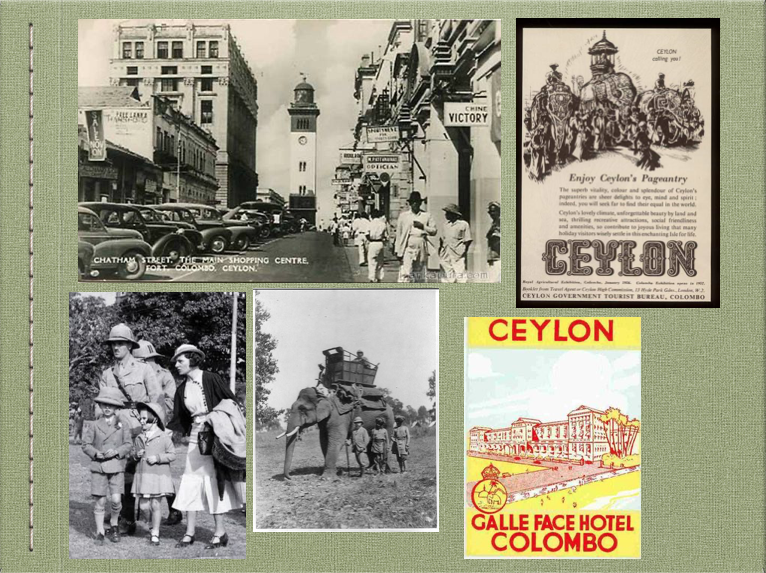
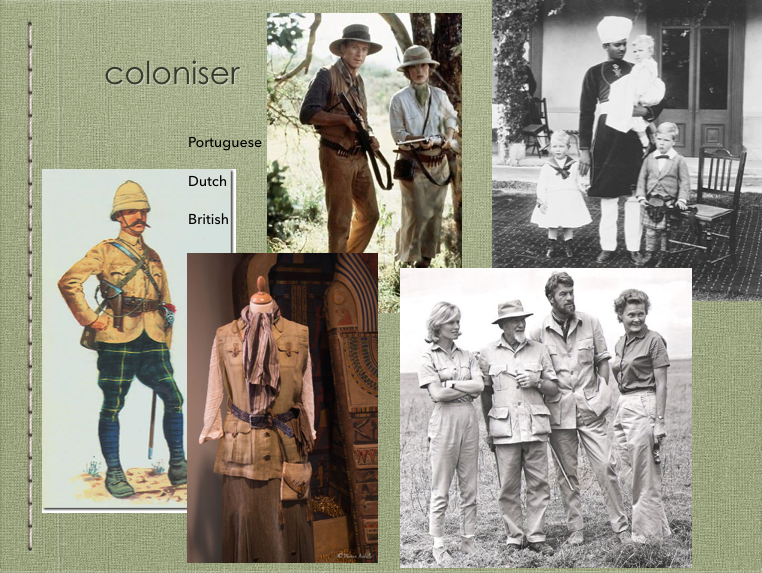
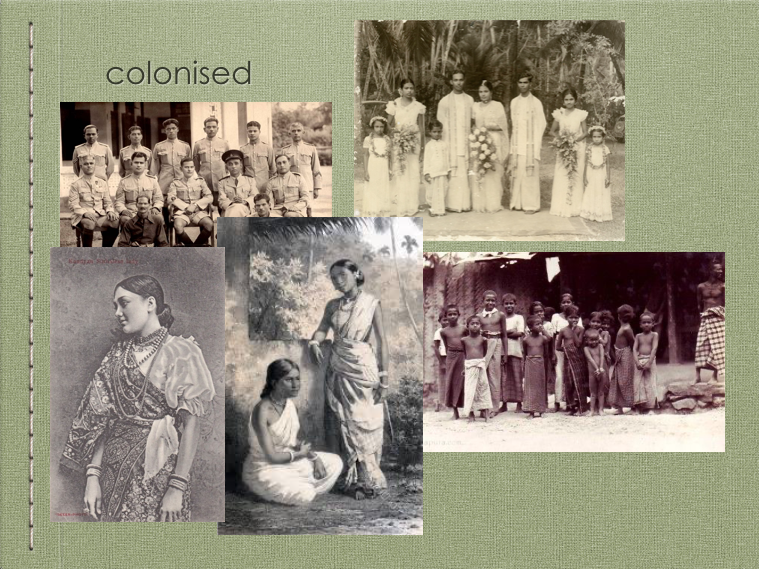
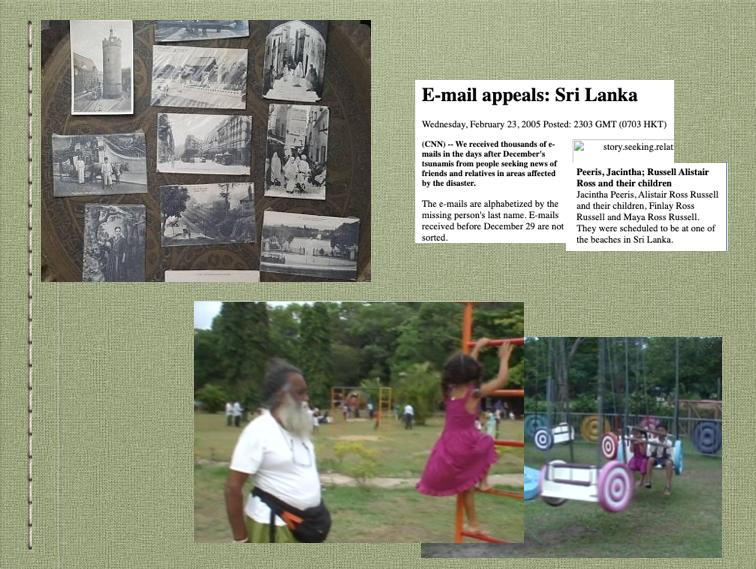
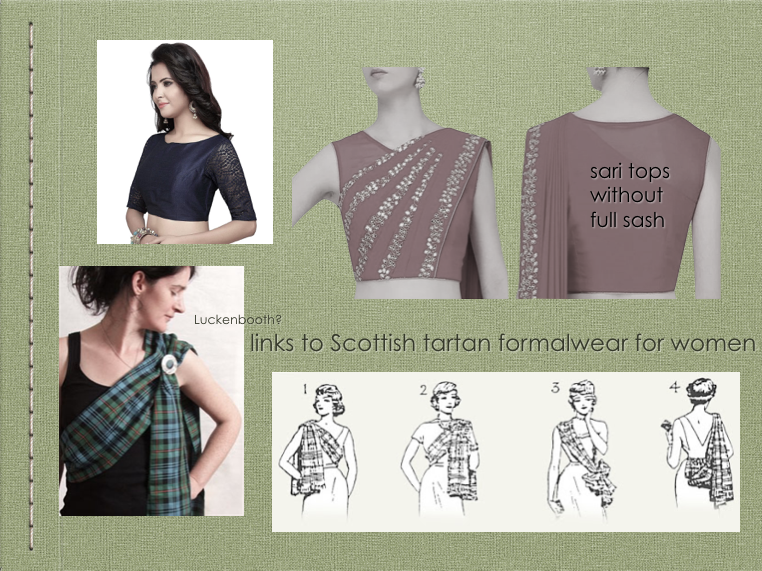
When It came to the design my biggest concern was making the top piece, I used a traditional method which would mean that the blouse would close in the front, however as this garment represents a worn history that is not chosen, but inherited, I wanted the shirt to be fastened from behind. In some ways I think that put more meaning into the costume because whenever I needed to take the costume on or off I needed help, I was reliant on other people to be able to wear and own my story.
Process
AR
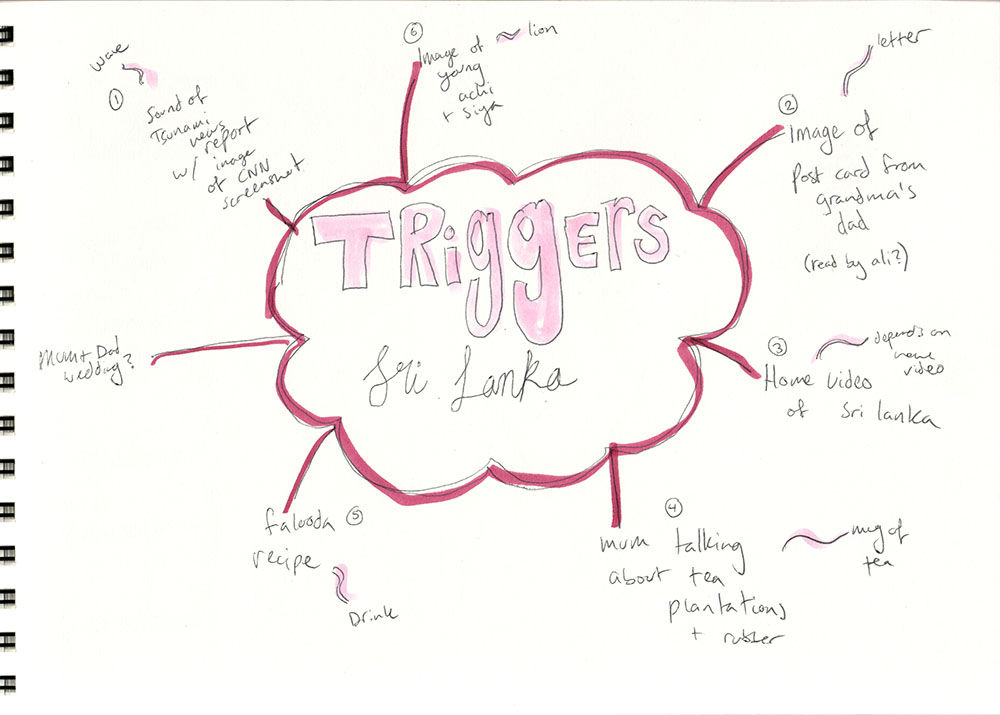
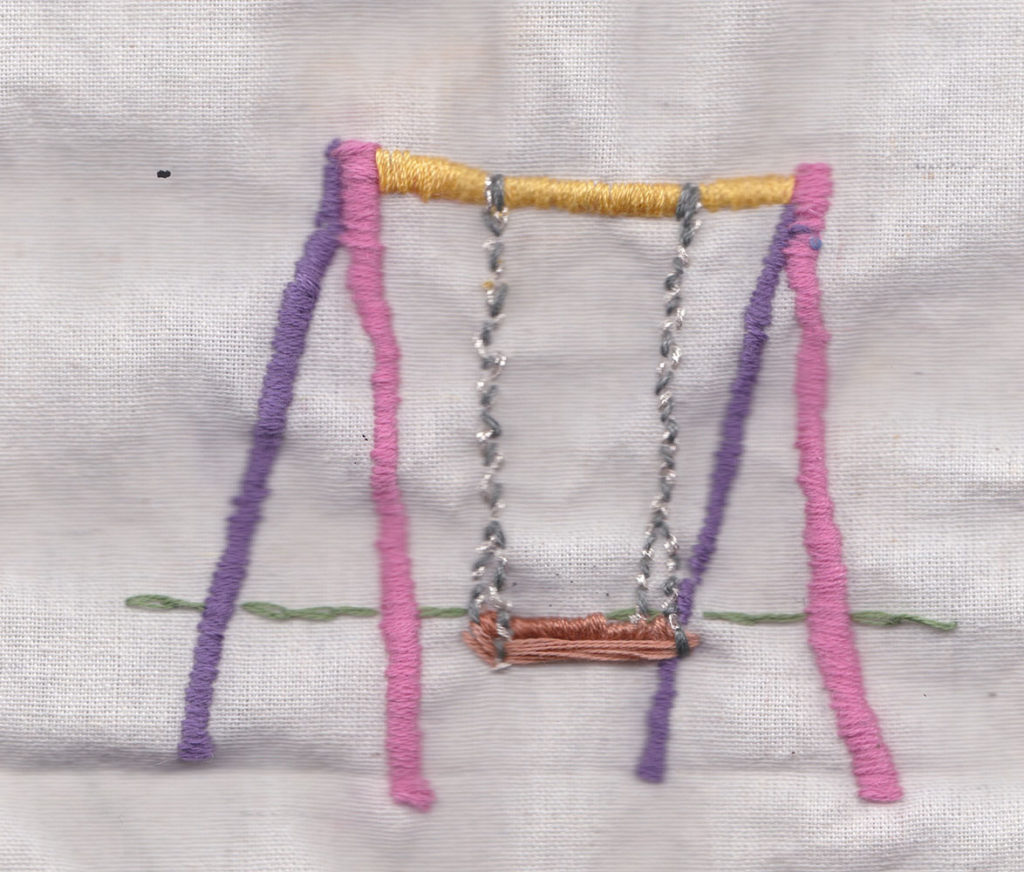
I have been wanting to experiment more with AR since first year when we did a project introducing us to this new technology. The big obstacle at that time was finding a software that made the process of connecting triggers to the content in an easy and accessible way. Thankfully, in a tutorial with Kate Lane she recommended ARTIVIVE which was incredibly easy to use. At first I was concerned about how creative I could be with trigger design, given that in my previous experience we were limited to mainly using traditional graphic design and printing on paper. For this costume I really wanted to experiment with embroidery due to its archaic aesthetic. I made sure to use bright colours which would make it easy for the app to recognise, but the main struggle was finding the right way to capture the embroidery as a 2D image to upload into ARTIVIVE.
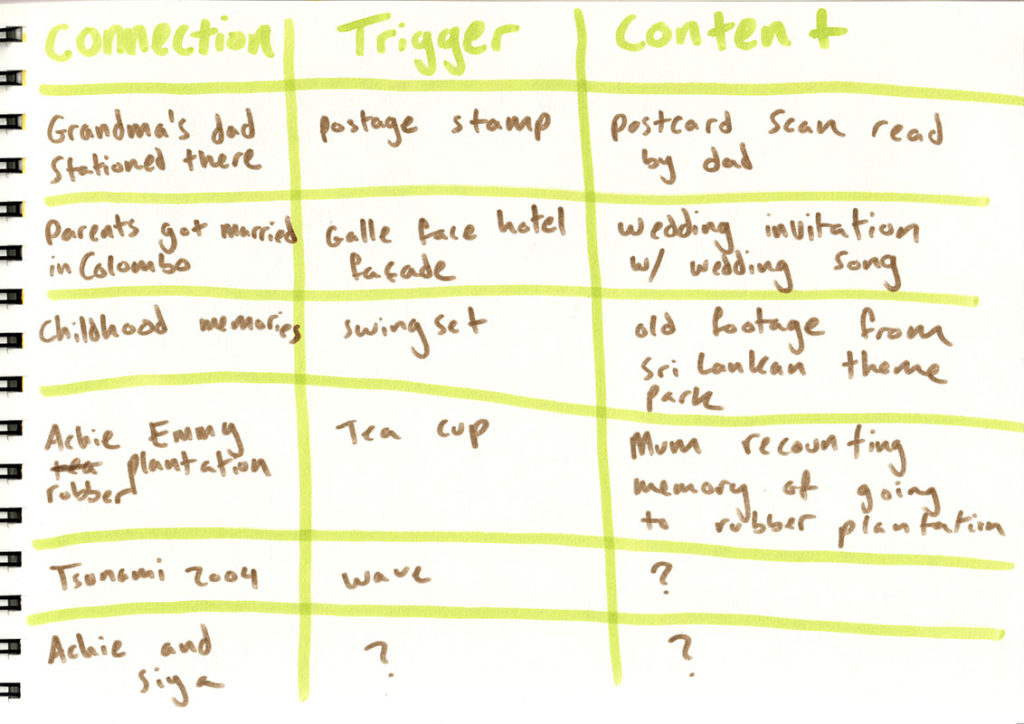
I initially tested the idea out with “Play”. I scanned the pieces of embroidery thinking that would give the most detailed image, however that didn’t respond well in the application as it came out a little blurry. In the end I found that the camera on my phone gave the best image for the app to recognise.
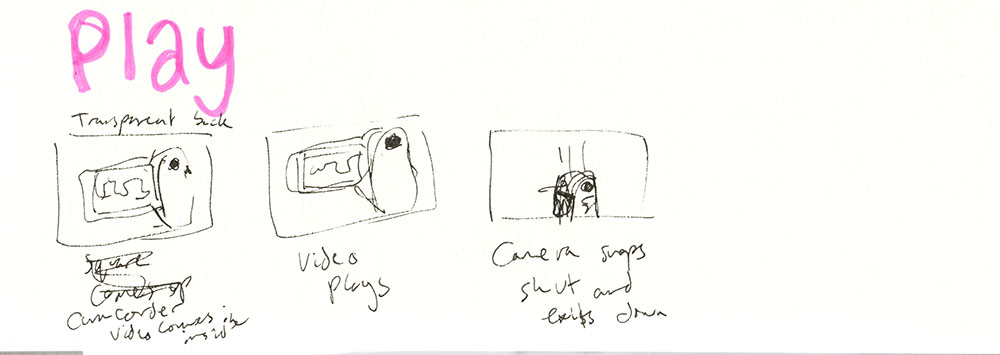

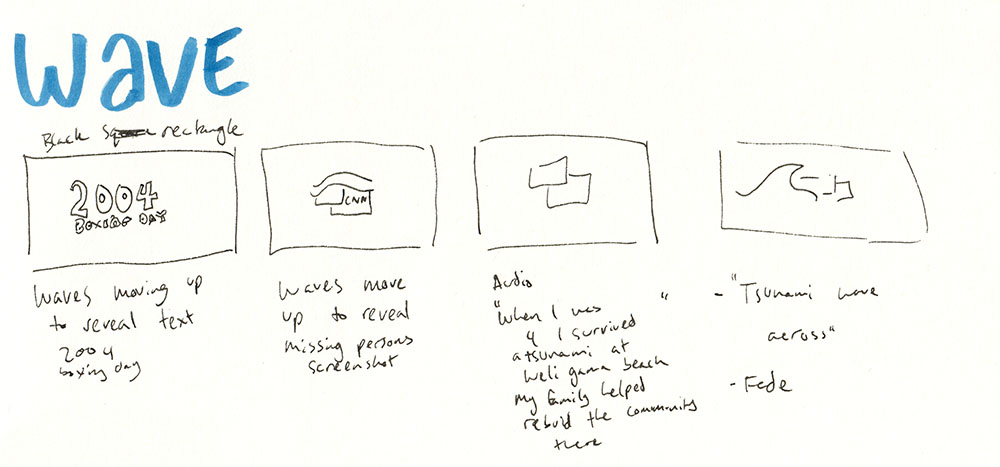
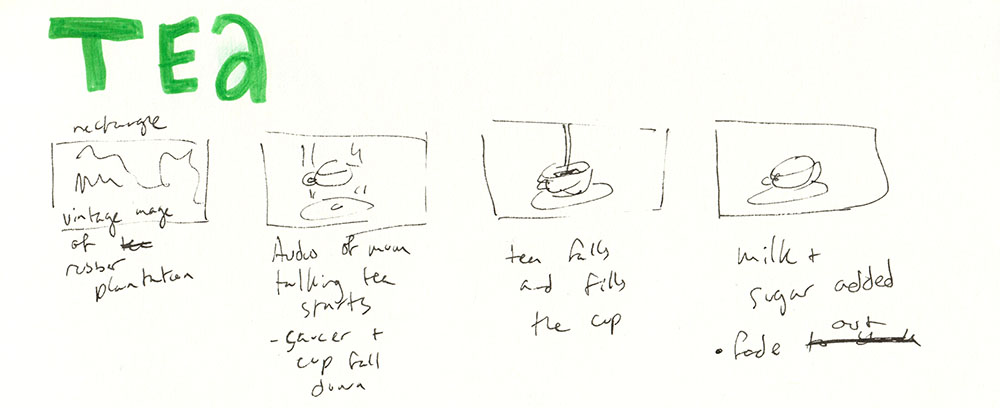
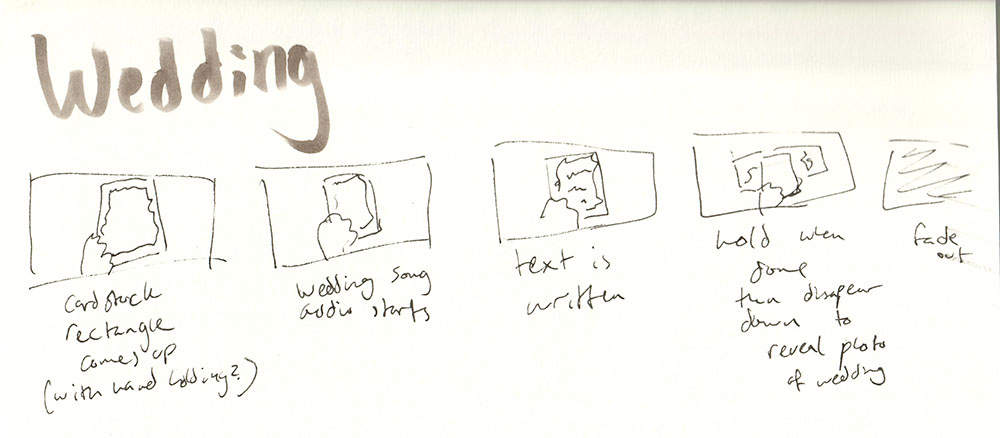
Outcome
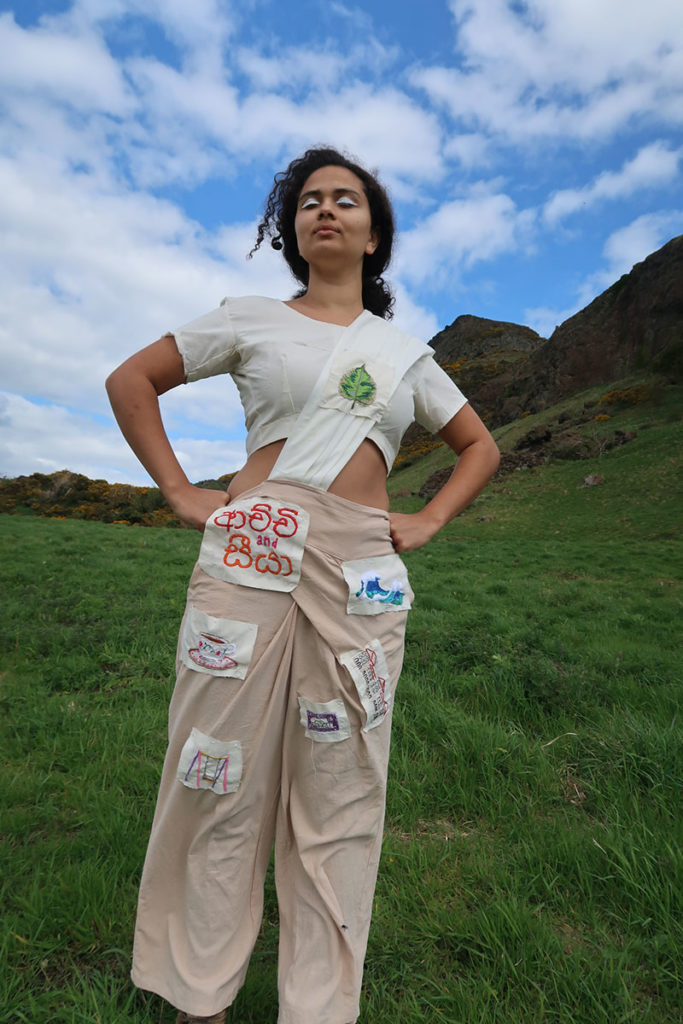
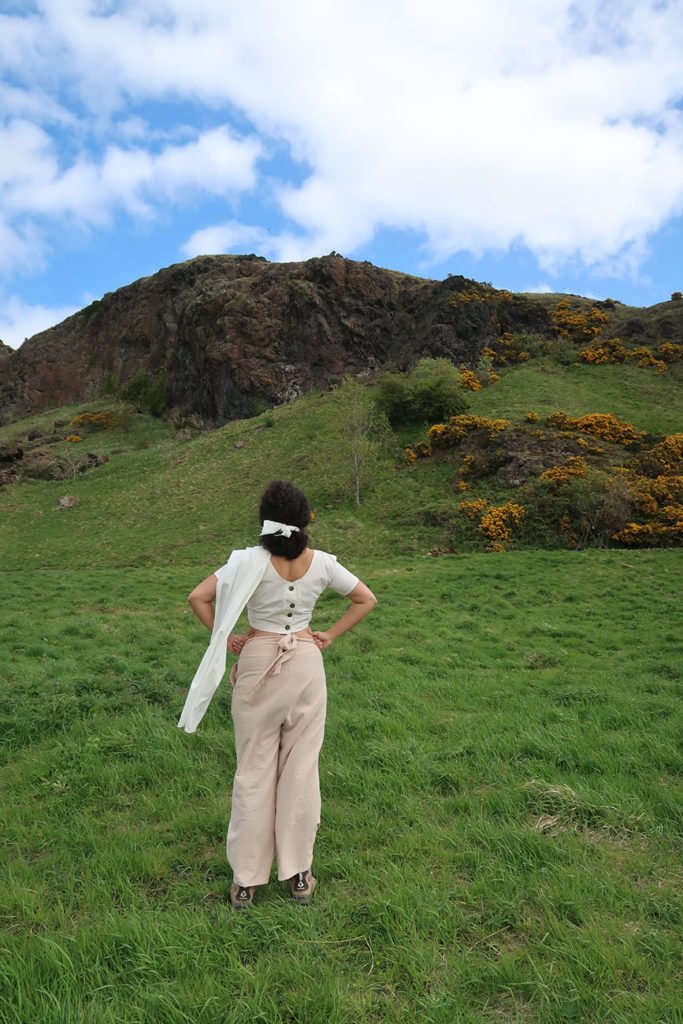
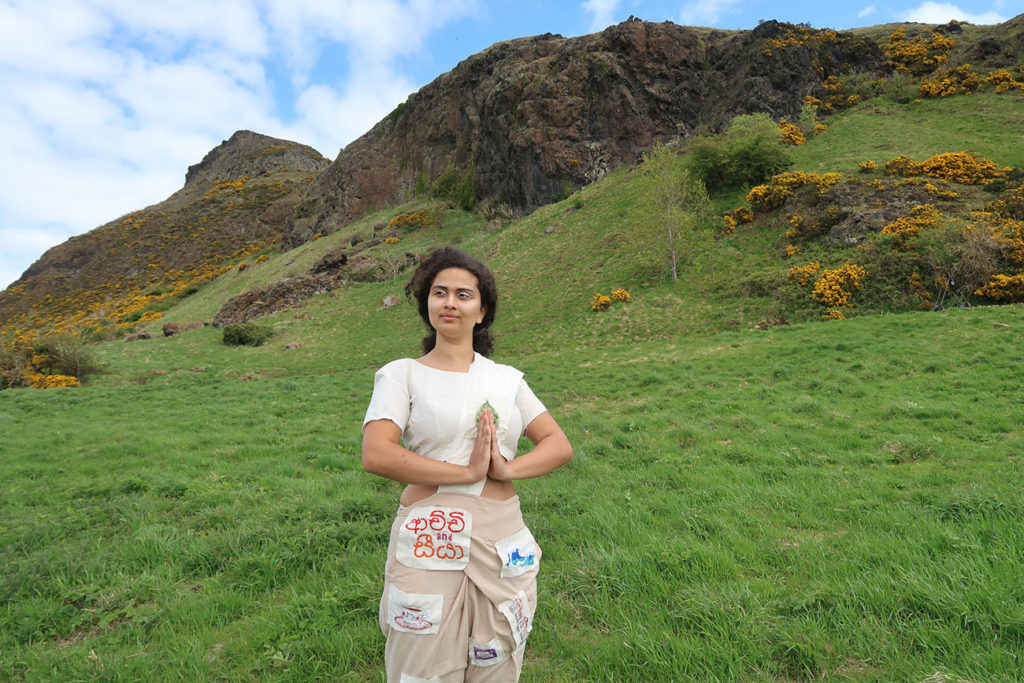
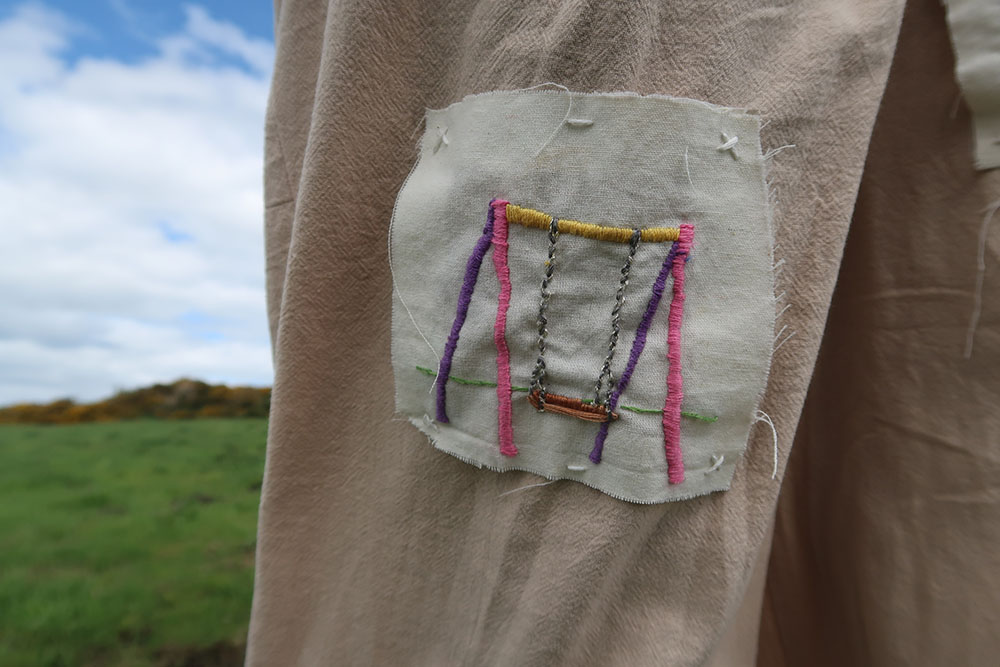
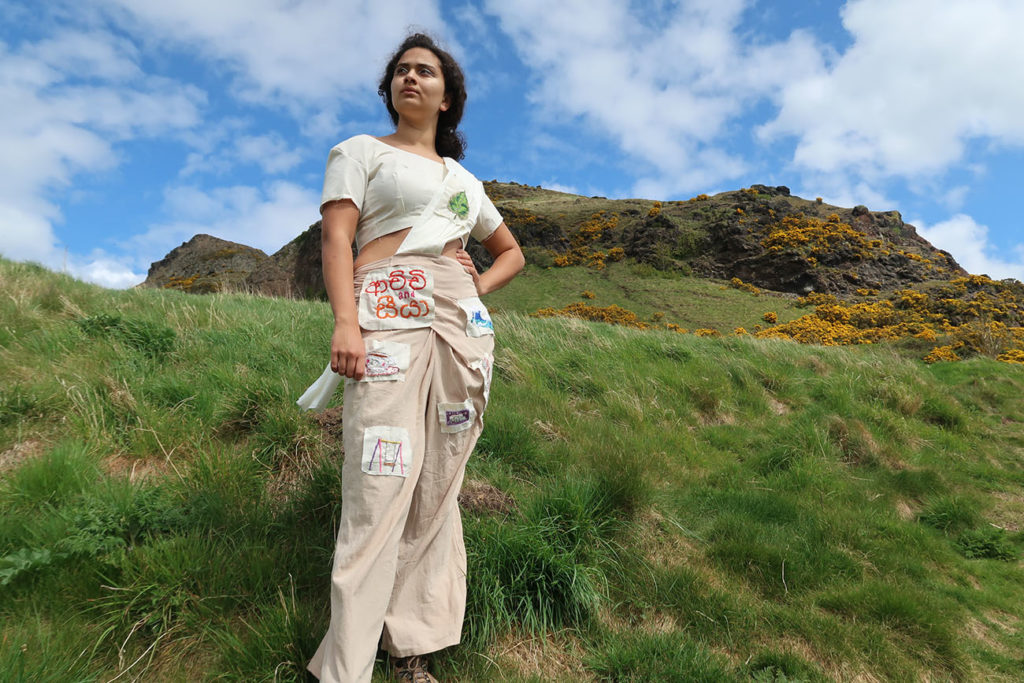
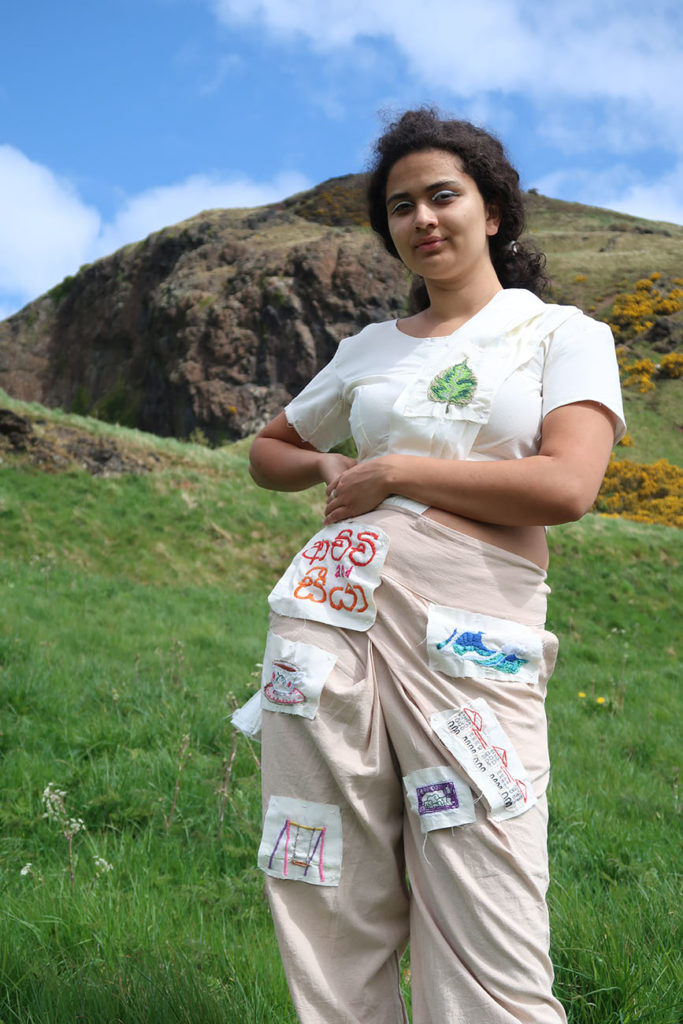
Then it was over to my Maternal side where I rallied my Aunts to find a picture of my “Achi and Siya” (Grandma and Grandpa) when they were young. The resulting picture was scanned from somewhere near the arctic circle in Canada and whatsapp-ed somewhat undramatically over to Edinburgh (hilariously where the photo was most likely taken).
From my biological family over to my spiritual family. My parents got married in Colombo, however all our photos exist miles away with other important documents in a cold room in Indonesia, leaving me with a piece of evidence with no way of expressing it. The solution ended up being a photo of the wedding invite sent from NYC care of one of my mothers best friends who, until I became an adult, was to be my guardian (should something happen to my parents).
Finally, I went into a deep dive of my own history, searching through photos and watching home videos until I found the video corresponding to my memory of playing in a big play/fair ground in Colombo as a child which later became the concept of “Play”. With “Wave” I had a few different ways that I could express my experience surviving a tsunami. I didn’t want to lead the audience with the piece in general, and “Wave” had a real danger of doing just that. I somewhat traumatically reviewed distressing footage, and decided that a series of screenshots outlining the event, and my families later work in providing relief to the communities living near the beach where we were was a more appropriate solution.
The entire process showed me the immense impact that one small island continues to have in my life, it’s in my blood, it’s in my definition of comfort food, it’s in my take-no-shit and make-it-happen attitude. It also showed me the impact that one small island has had on the people whom I care about, and who care about me the most.
As with most of my ideas, this one came about in the middle of the night in November when it occurred to me that it would be really cool to make an outfit that told a story through AR. About a month later I started exploring the concept of the stories that are told by the clothes we wear everyday and the impression that creates. At the same time I was grappling with concepts of home and multiculturalism for a separate project and when thinking of my own interpretations of home I found myself pooling together bits of evidence as if I was trying to solve some kind of mystery. That was when it hit me that each piece of evidence served as an insight into issues grappling with identity.
From there the project evolved and grew into an homage not only to my ancestors but to my own living connection to Sri Lanka as, despite being mixed race I have connections to not only Sri Lanka, but Edinburgh (where these photos were taken) on both sides of my lineage.
The making process quickly became a family wide event. My first port of call was messaging my paternal Grandmother with the intention of persuading her to scan some postcards from her father when he was stationed in, then Ceylon, during WW2. To my surprise it had turned out she had sent them to my Dad for his birthday so he brought them over and was persuaded to be the voiceover for “Post”,
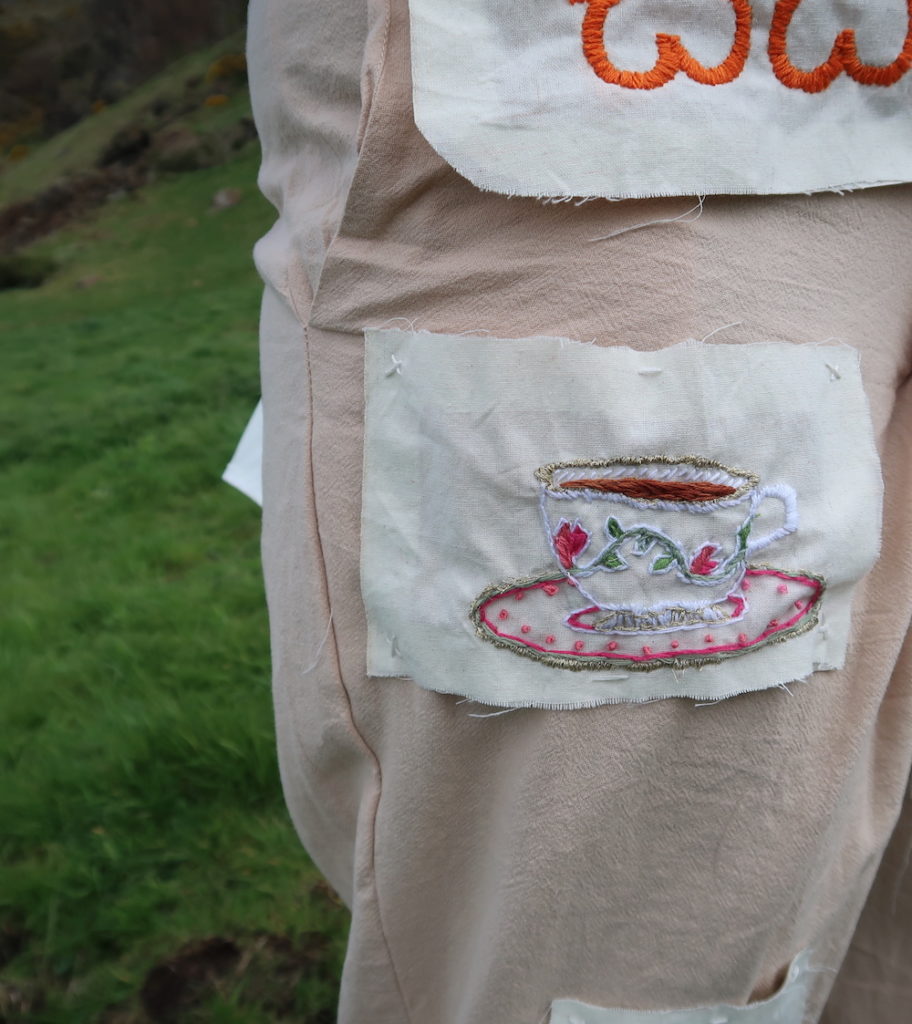
This costume was made for the many 2nd generation immigrants who are trying to find connection after feeling foreign for so long, it’s also for other mixed race audiences who share feelings of being torn between many worlds whilst trying to connect to the one that automatically makes them “other”.

